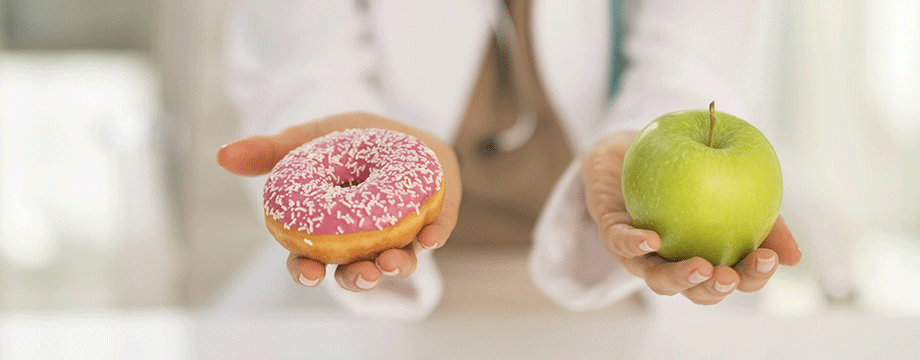Could you reverse your diabetes?

Liz Parry takes a look at a new approach to diabetes which claims that the condition can be reversed through dietary and lifestyle changes
Until recently, medical experts believed that type 2 diabetes was an irreversible health condition. Once you were diagnosed with it, you had it for life. However, new evidence is suggesting that this may no longer be the case and that by making the right dietary and lifestyle changes it could be possible to reverse the condition.
This ground-breaking new approach is outlined in the books Reverse Your Diabetes and Reverse Your Diabetes Diet, written by medical doctor and diabetes expert Dr David Cavan.
It should be stressed, however, that this approach applies to type 2 diabetes only. Type 1 diabetes is a lifelong condition.
“We now have a greater understanding about the nature of type 2 diabetes,” says Dr Cavan. “Evidence now suggests that the condition can be reversed through making dietary changes. This is a big, big change from our previous thinking.” Dr Cavan explains that research-based evidence has indicated that people with type 2 diabetes who had weight-loss surgery found afterwards that they no longer had the condition. Also, Dr Cavan himself had been looking into the relationship between high carbohydrate intake and type 2 diabetes, and began suggesting that his patients try reducing their carb intake instead of increasing their medication. He found that many of his patients were able to control their diabetes much better and some were even able to stop injecting insulin. The science behind this is that fat accumulation in the body leads to insulin resistance, high blood glucose levels and weight gain – all the hallmarks of type 2 diabetes.
A change in lifestyle
In those who have diabetes, the levels of glucose in their blood are too high because the body is unable to use it properly. Ordinarily, the body digests carbohydrates which produces glucose, and this glucose then enters the body’s cells, where it is used as fuel for energy. Insulin is a hormone produced by the pancreas which enables this process to occur. However, in those with diabetes, there is either no insulin to enable the glucose to enter the body’s cells (which is what happens with type 1 diabetes) or the insulin is there but isn’t working properly (in the case of type 2 diabetes).
According to a recent report based on GP patient data, there are now 4.05 million people living with diabetes, which includes 3.5 million adults who have been diagnosed. This marks an increase of 119,965 compared to the previous year and an increase of 65 per cent over the past decade. It seems that this new evidence couldn’t have come sooner. But what are the reasons behind this huge surge in cases of diabetes?
“These figures refer almost exclusively to type 2 diabetes which is the most common type,” explains Dr Cavan. “Type 2 diabetes is very strongly related to our modern-day lifestyle. This includes eating unhealthy, processed foods, not being very active and being overweight. All these things increase our chances of developing type 2 diabetes. It’s a progressive effect of modern-day life.”
According to statistics, 90 per cent of adults with diabetes have type 2 compared to just 10 per cent who have type 1. So why is type 2 more common?
“They are actually very different conditions,” explains Dr Cavan. “Type 1 diabetes is an autoimmune disease where the body’s immune system attacks the cells of the body that produce insulin. This results in a lack of insulin which leads to the development of diabetes. This occurs generally in younger people and young adults. Type 2 diabetes on the other hand is very much linked to lifestyle factors. It was actually quite uncommon 50 years ago but as more of us are becoming overweight, type 2 diabetes has increased dramatically.”
How to reduce your diabetes risk
Here are Dr Cavan’s top tips for reducing your risk of developing type 2 diabetes:
Cut out sugar as much as possible
Sugar is associated with an increased risk of type 2 diabetes. Stop using sugar in tea and coffee and avoid sweet drinks such as fruit juice, squashes and fizzy drinks.
Also try to avoid things like cakes, biscuits, jam, sweets or chocolate, except as an occasional treat. Reduce the amount of alcohol you drink, particularly drinks containing carbohydrates, such as beer, cider or sweet wines.

Reduce your carb intake
Starchy carbohydrates such as white rice, white pasta, potatoes and cereals, are turned into sugar by the body, so cutting down on them should help to reduce your calorie intake, lead to some weight loss and help stabilise your blood glucose levels. If you tend to eat cereals at breakfast, go for boiled, poached or scrambled eggs instead with at most one slice of toast. For lunch you could have a salad or homemade soup as long as it’s not made from starchy vegetables like potatoes. At dinner time, avoid carbohydrate-heavy meals like potatoes, pasta or rice. Instead eat some lean protein with plenty of leafy vegetables.
Cut down on junk food
Diets that are based on processed foods and so-called junk foods have been shown to increase your risk of type 2 diabetes. Try to go back to the diet that that our forebears were eating a few decades ago, which is based on real food rather than processed food.
Get more exercise
Current guidelines are that we should all be taking 30 minutes of brisk exercise a day. However, for people who may not have exercised in years, this is not necessarily so easy. Start out by taking a 15-minute walk each day. Find ways to increase the amount of exercise you do by taking the stairs instead of the lift or walking rather than driving. It’s also important to realise that our bodies were not designed to spend long periods sitting down – we are designed to be on our feet and walking. Evidence suggests that long periods of being sedentary can be a risk factor for type 2 diabetes. So it is very important to keep taking breaks from sitting down, especially if you work at a desk or sit in front of the TV in the evenings.
Reverse Your Diabetes Diet: Take control of type 2 diabetes with 60 quick and easy recipes by Dr David Cavan is published by Vermilion, priced £10.99.
For more information on diabetes and support from the diabetes community, visit www.diabetes.co.uk
Top tips:
“Try to eat a balanced diet (complex carbohydrates, proteins and fats) containing plenty of fresh fruit and vegetables,” says Dr David Mantle, nutritional advisor for Pharma Nord (www.pharmanord.co.uk). “Such foods with a high fibre content help to slow the absorption of sugar from the digestive tract. Eat regular meals, control portion sizes and don’t skip meals.”
“Natural supplements such as chromoprecise and delphinol can help manage blood sugar levels,” says Dr Mantle. “They can also reduce the associated symptoms of high blood sugar: hunger pangs, cravings for sugary foods and energy highs and lows. Chromoprecise, a yeast-bound form of chromium, works with insulin to process the sugars in our foods more effectively, moving glucose out of the bloodstream and converting it to energy. Delphinol, an extract from the Chilean Maqui Berry, allows our bodies to regulate how much sugar enters our bloodstream from the digestive tract helping to avoid sharp spikes in blood sugar after food consumption and the consequent energy lows.”
Read previous Your Health articles here...
Read articles from our latest issue here...